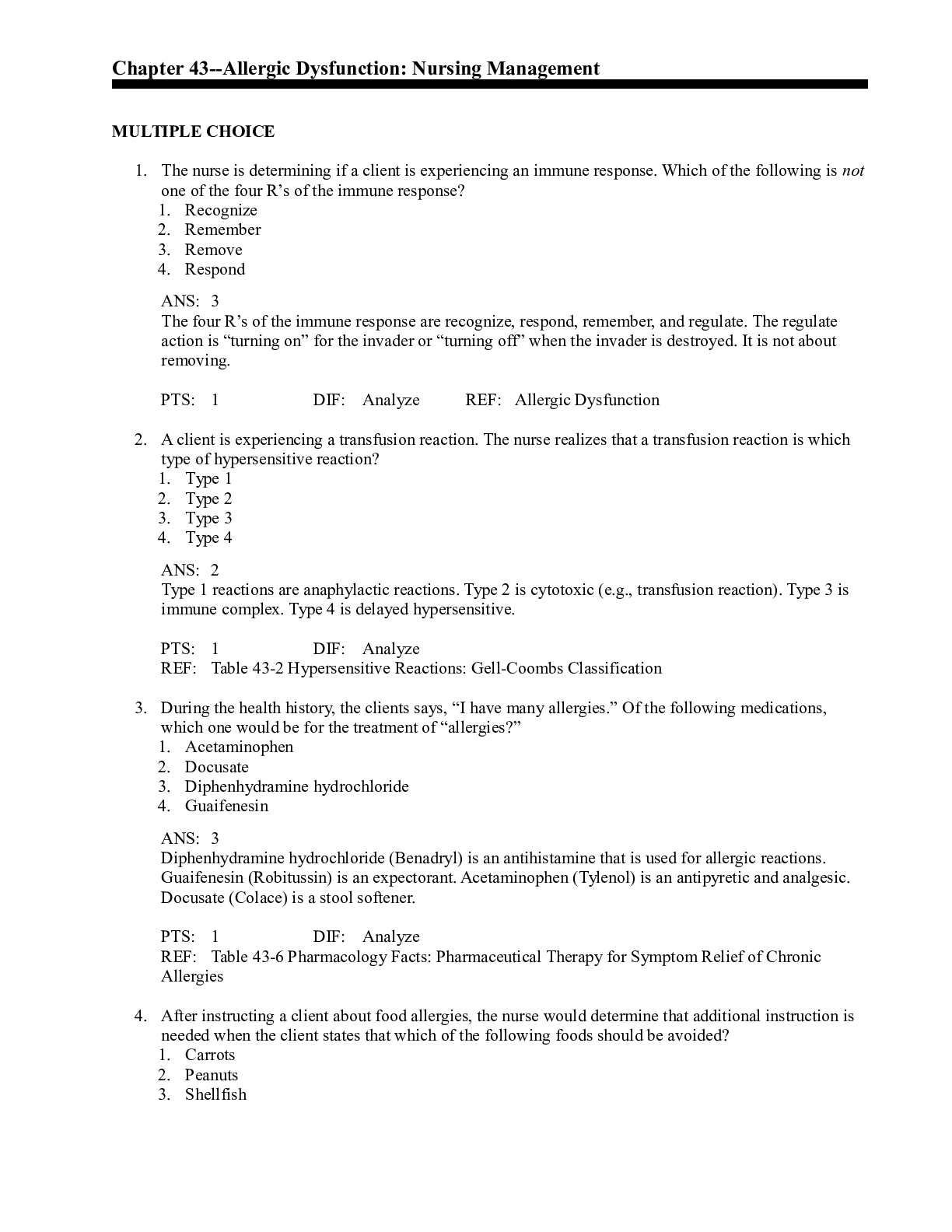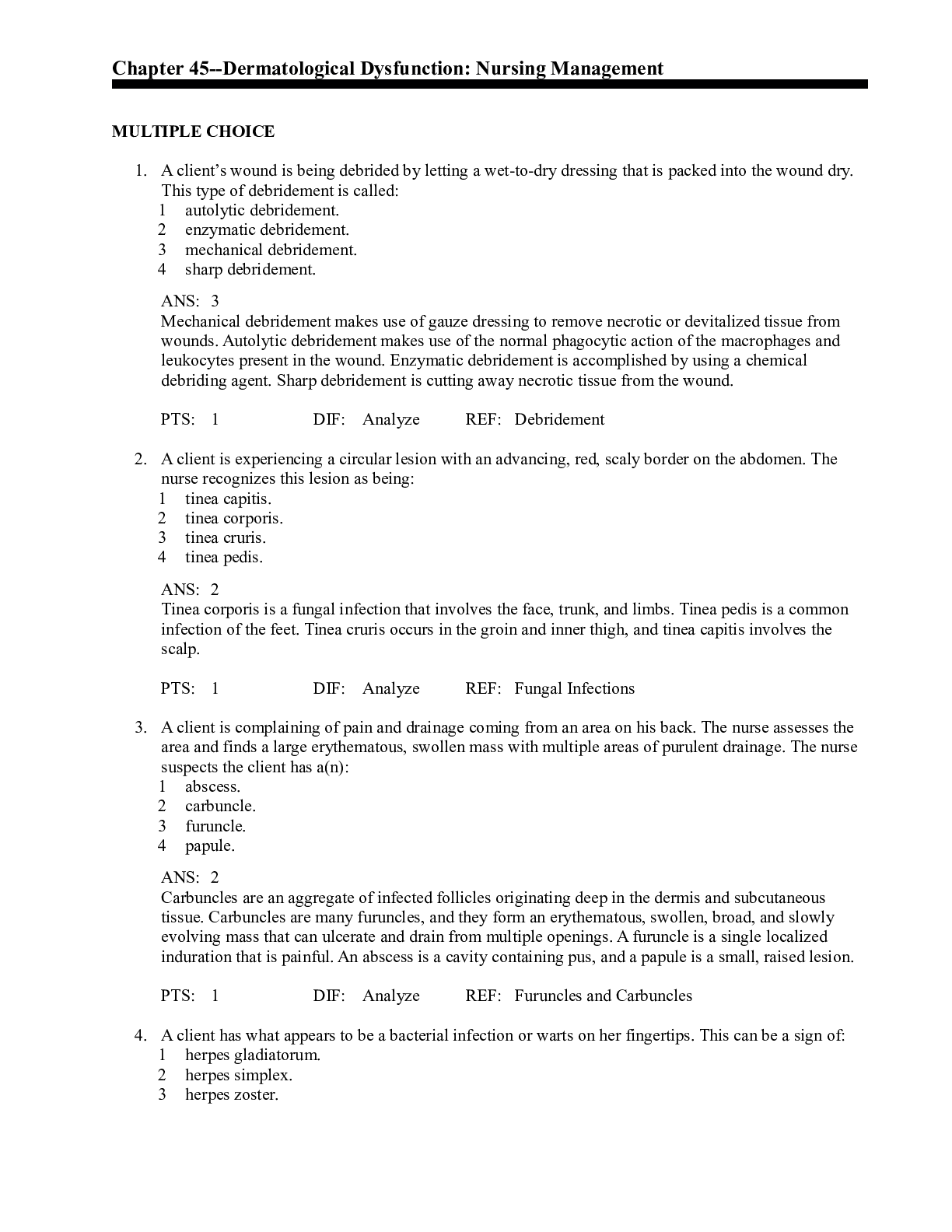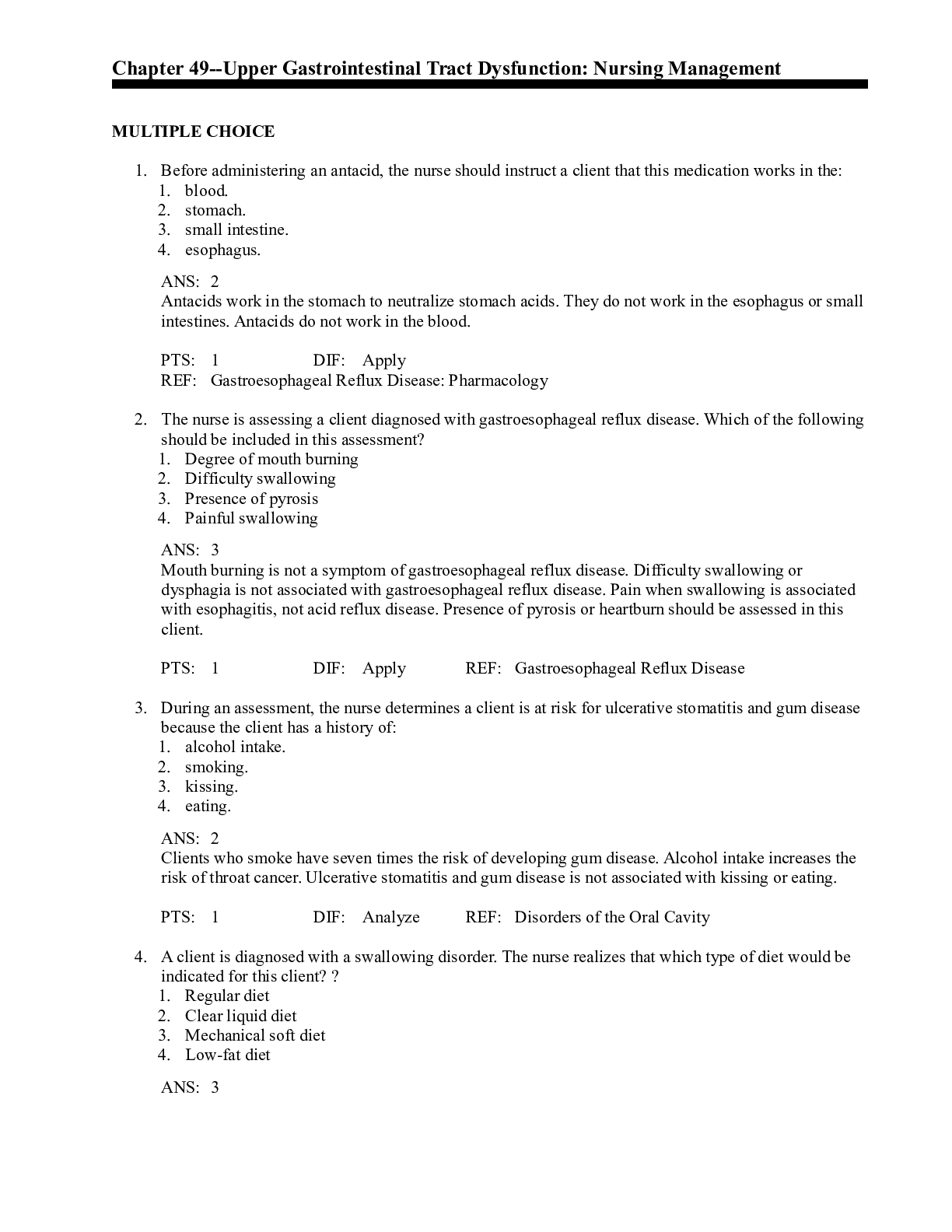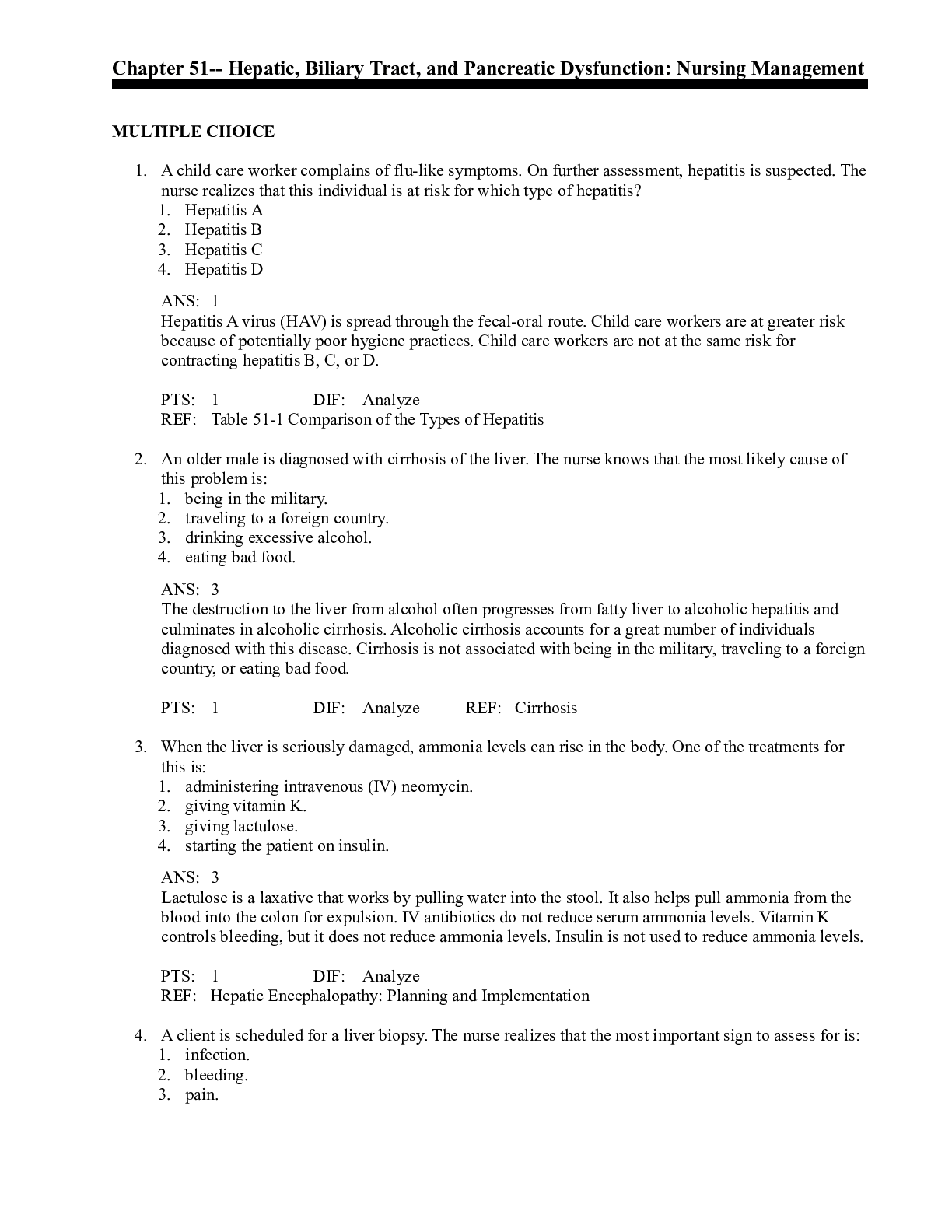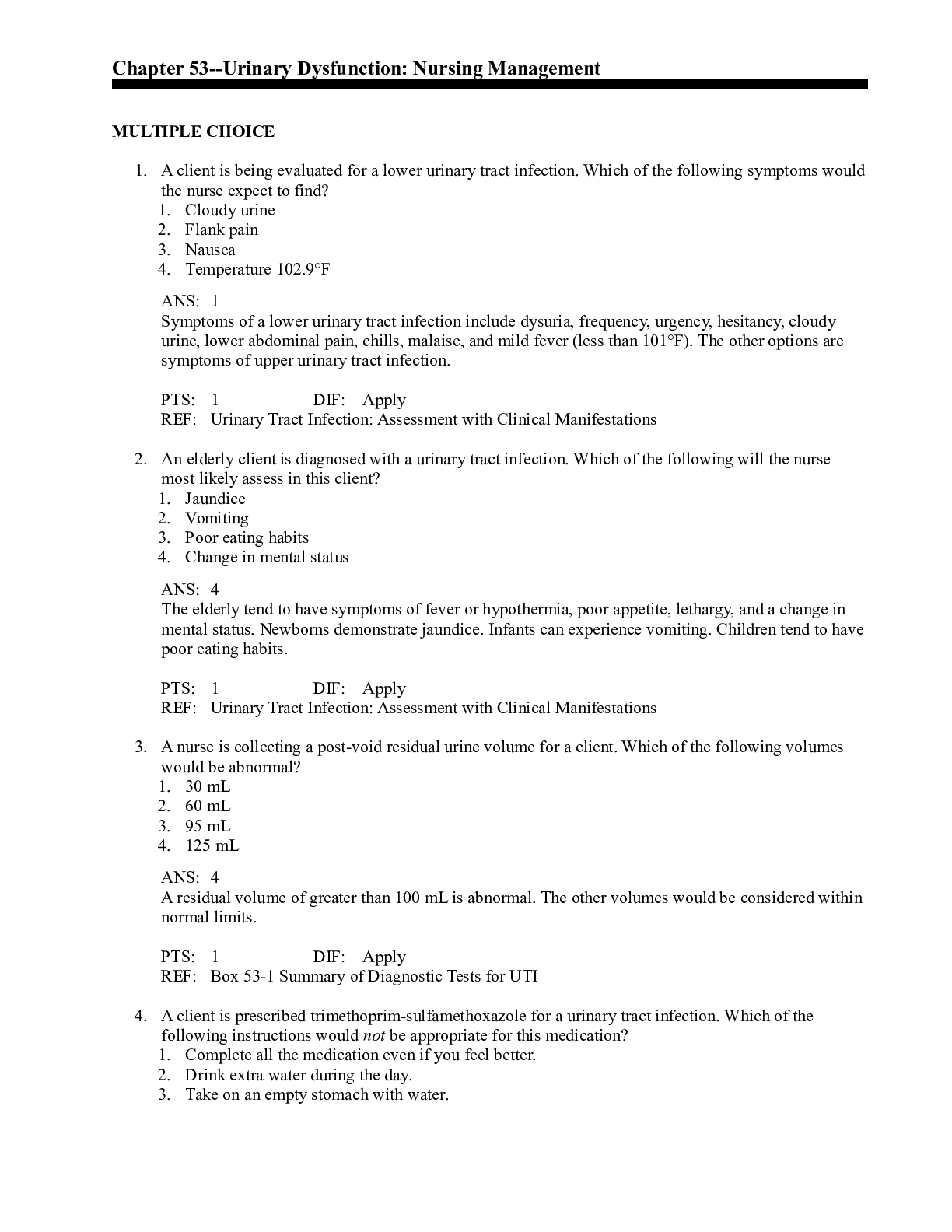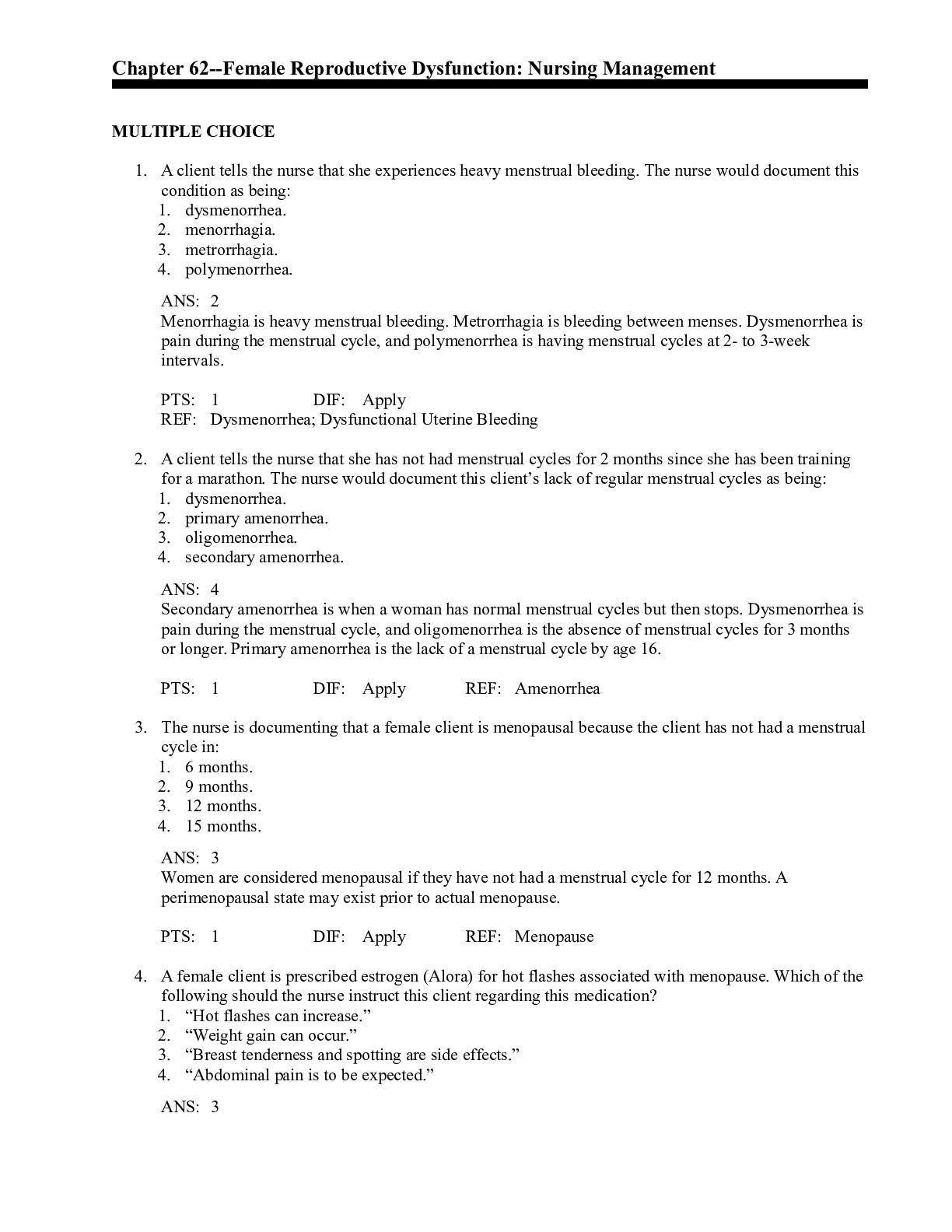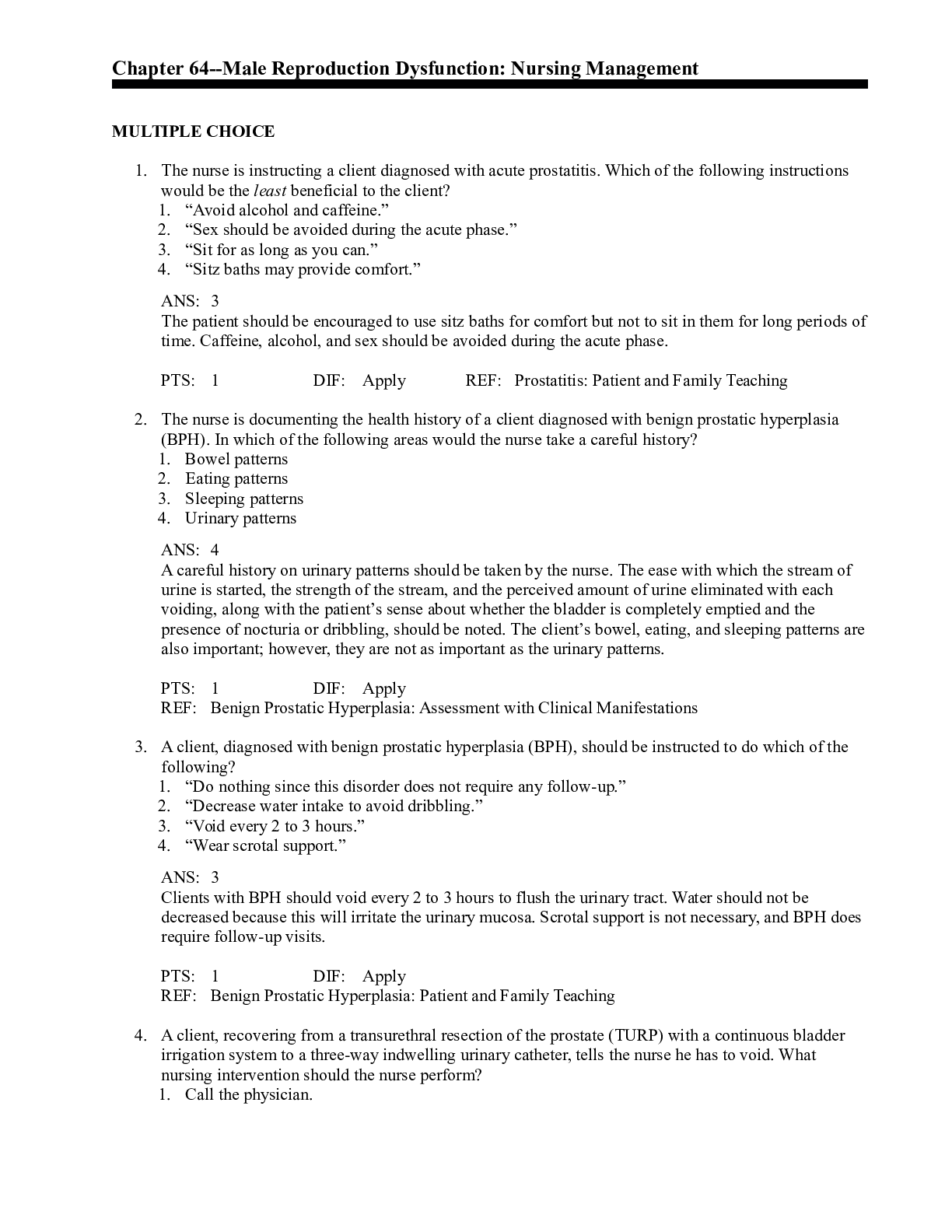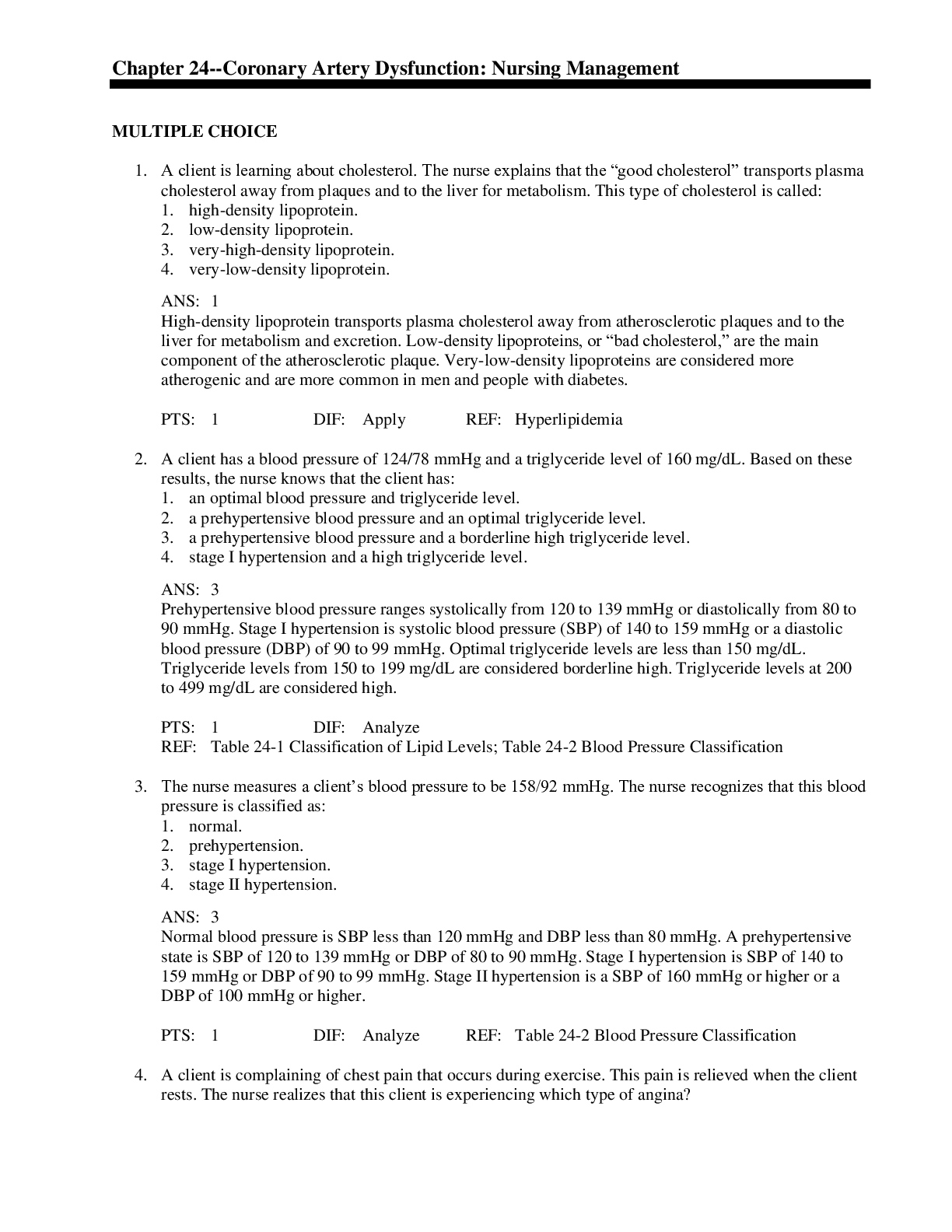*NURSING > QUESTIONS & ANSWERS > Chapter 40--Auditory Dysfunction: Nursing Management (All)
Chapter 40--Auditory Dysfunction: Nursing Management
Document Content and Description Below
Chapter 40--Auditory Dysfunction: Nursing Management MULTIPLE CHOICE 1. A client is not able to successfully pass the whisper test. Which of the following would be indicated for this client? ... 1. Head CT scan 2. Audiometry 3. MRI of the brain 4. Electroencephalogram PTS: 1 DIF: Analyze REF: Auditory Dysfunction: Assessment with Clinical Manifestations 2. A client is prescribed a medication that is ototoxic. The nurse realizes that this medication may cause: 1. permanent or temporary vision loss. 2. permanent or temporary hearing loss. 3. nausea and vomiting. 4. central nervous system (CNS) depression. PTS: 1 DIF: Analyze REF: Auditory Dysfunction: Ototoxic Medications and Auditory Dysfunction 3. The nurse is trying to communicate with a hearing-impaired client. The best way to do this is to: 1. write down all of the message. 2. shout in the impaired ear. 3. speak slowly and clearly while facing the client. 4. talk in a regular voice in the good ear. PTS: 1 DIF: Apply REF: Nursing Strategy: Communicating with the Hearing Impaired 4. A client is diagnosed with a conductive hearing loss. The nurse realizes type of hearing loss is not associated with: 1. cerumen. 2. brain damage. 3. otitis media. 4. otosclerosis. PTS: 1 DIF: Analyze REF: Conductive Hearing Loss 5. A client is complaining of dizziness, unilateral ringing in the ear, feeling of pressure or fullness in the ear, and unilateral hearing loss. The nurse would suspect the client is experiencing: 1. Ménière’s disease. 2. osteosclerosis. 3. otitis media. 4. mastoiditis. PTS: 1 DIF: Analyze REF: Meniere's Disease 6. A client complains of a slight itching, slight pain, and a scratching sound in the ear. The nurse suspects that an insect may have entered the ear. Which of the following should not be done? 1. Add water to flush out the insect. 2. Add mineral oil to kill the insect. 3. Add lidocaine to kill the insect. 4. Call an otologist for a referral. PTS: 1 DIF: Apply REF: Foreign Body 7. The hearing of an unresponsive client needs to be assessed. Which of the following will be used to assess the hearing of this client? 1. Audiometer 2. Brainstem auditory evoked responses (BAER) test 3. Rinne test 4. Weber test PTS: 1 DIF: Apply REF: Brainstem Auditory Evoked Response Test 8. The nurse is planning to assess a client diagnosed with conductive hearing loss. When performing the Weber test, the nurse would expect which of the following findings? 1. The sound will be louder in the affected ear. 2. The sound will be louder in the good ear. 3. Air conduction is shorter than bone conduction. 4. No sounds will be heard. PTS: 1 DIF: Apply REF: Rinne and Weber Tests 9. The nurse is performing postoperative teaching with a client recovering from a stapedectomy. Which of the following instructions would the nurse want to include in the teaching? 1. “It is okay to resume exercise the next day.” 2. “It is okay to resume work the same day.” 3. “It is okay to shower and shampoo the next day.” 4. “It is okay to blow the nose gently one side at a time.” PTS: 1 DIF: Apply REF: Repair of Inner Ear Disorders 10. After a mastoidectomy, the most important complication for the nurse to assess for is: 1. vomiting. 2. headache. 3. fever. 4. stiff neck. PTS: 1 DIF: Analyze REF: Repair of Inner Ear Disorders 11. When instructing a client on cleaning the ear, the nurse should instruct the client to clean: 1. only the outer ear. 2. all the way to the middle ear. 3. all parts of the ear outer, middle, and inner ear. 4. just the tympanic membrane. PTS: 1 DIF: Apply REF: Planning and Implementation 12. Which of the following would prohibit an elderly client from wanting to obtain and use a hearing aid? 1. Fears sounds will be too loud 2. Thinks not necessary for a temporary problem 3. Fears the cost 4. Prefers silence PTS: 1 DIF: Analyze REF: Hearing Aids 13. Which of the following should the nurse instruct a client who is being fitted for a hearing aid? 1. Keep the appliance turned on at all times. 2. Store the hearing aid in a warm, moist place. 3. Batteries last for at least 1 month. 4. Clean ear molds at least once a week. PTS: 1 DIF: Apply REF: Patient Playbook: Care of Hearing Aids MULTIPLE RESPONSE 1. The nurse is instructing a client diagnosed with otitis media on management during the acute phase. Which of the following should the nurse include in the teaching? (Select all that apply.) 1. Take the antibiotics as ordered. 2. Take over-the-counter analgesics for mild pain as recommended. 3. It is okay to go swimming. 4. It is okay to go on vacation and trips that require flying. 5. If excruciating pain develops, seek medical care. 6. Limit fluids. . PTS: 1 DIF: Apply REF: Otitis Media 2. When caring for a client with total hearing loss, the nurse is instructing the client about the many options that are available to function in a hearing world. Which of the following should the nurse include? (Select all that apply.) 1. Flashing lights for alarms 2. TV with closed captions 3. Talking computer 4. Lip reading and sign language 5. Cell phones with headsets 6. Loud ringers on telephones PTS: 1 DIF: Apply REF: Communication Tools 3. A client is diagnosed with a congenital hearing loss. Which causes does the nurse realize are reasons for this type of hearing loss? (Select all that apply.) 1. Genetics 2. Natal infections 3. Physical deformities 4. Noise levels 5. Maternal ototoxic drugs 6. Maternal TORCH infections PTS: 1 DIF: Analyze REF: Auditory Dysfunction: Genetics 4. A client with a family history of hearing loss asks the nurse what he can do to prevent this disorder as he ages. Which of the following should the nurse instruct this client? (Select all that apply.) 1. Turn down radio and television volume. 2. Avoid noisy areas such as rock concerts. 3. Wear protective devices. 4. Use plain cotton balls in the ears. 5. Avoid sun exposure. 6. Flush the ears daily with mineral oil. PTS: 1 DIF: Apply REF: Primary Prevention 5. Which of the following are indications that a client has been exposed to excessive noise? (Select all that apply.) 1. Raising the voice to talk in normal conversation 2. Clear drainage from the ears 3. Inability to hear a conversation 2 feet away 4. Sounds are muffled 5. Ringing of the ears 6. Short periods of pain in the ears PTS: 1 DIF: Analyze REF: Noise Pollution [Show More]
Last updated: 1 year ago
Preview 1 out of 5 pages
Instant download
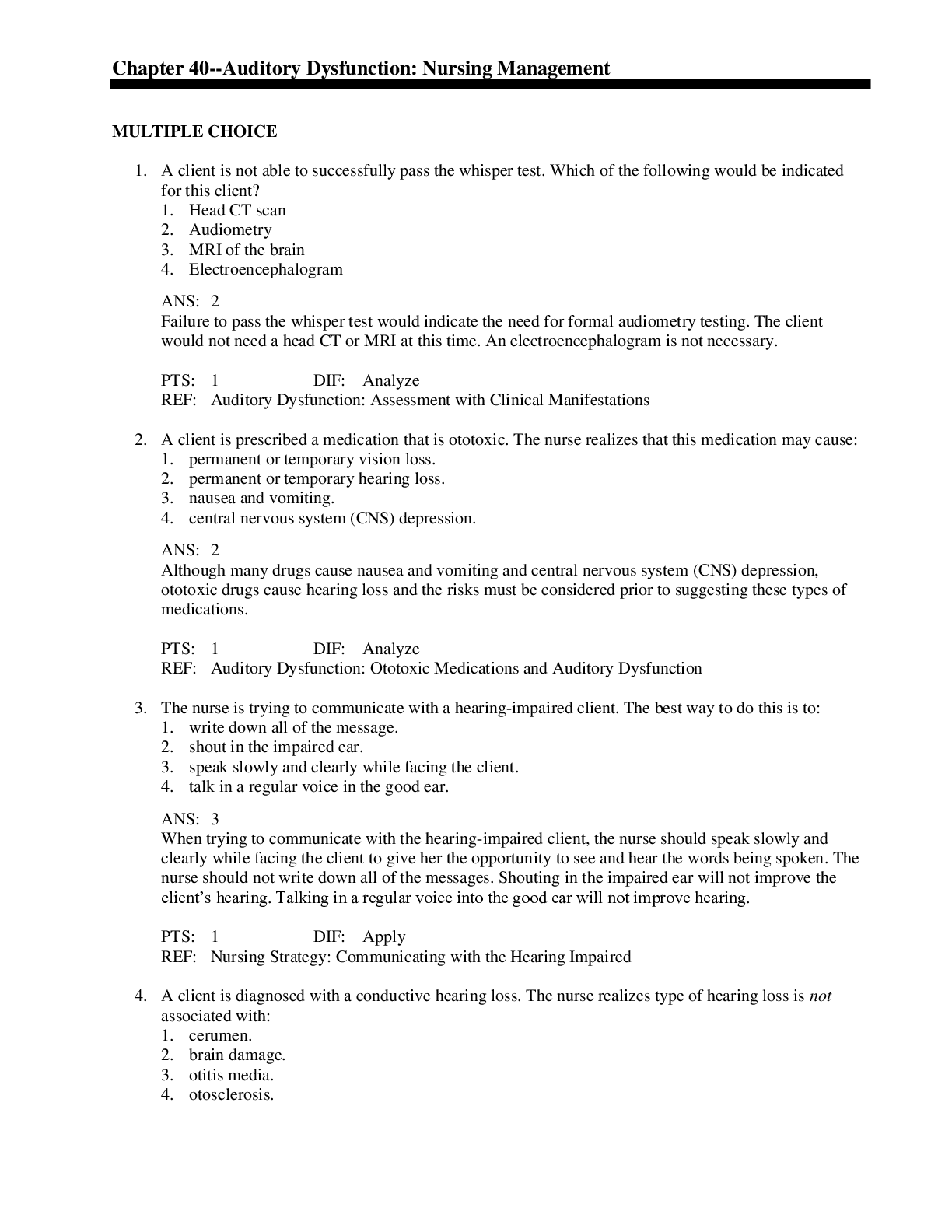
Buy this document to get the full access instantly
Instant Download Access after purchase
Add to cartInstant download
Reviews( 0 )
Document information
Connected school, study & course
About the document
Uploaded On
Jan 28, 2020
Number of pages
5
Written in
Additional information
This document has been written for:
Uploaded
Jan 28, 2020
Downloads
0
Views
36













